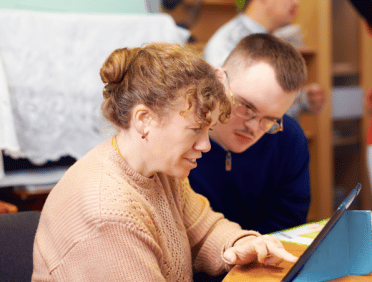“Working Together to Safeguard Children” is a catchphrase that reverberates throughout communities, agencies, and legislative chambers. It represents a shared dedication to the future generation’s welfare, a pledge that every child in the UK is entitled to a childhood free from harm, bolstered by a network of committed professionals, and empowered by a society that places a high value on their well-being.
As the journey continues, the collaborative spirit remains strong, ensuring that children in the United Kingdom may look forward to a future that is not just safe but also full of promise and opportunity.
Child safeguarding: A Collaborative Approach
Child protection is a pillar of societal responsibility, with the United Kingdom taking a comprehensive and collaborative approach to ensuring the well-being and protection of its most vulnerable citizens. Further investigation into the historical context of child safeguarding legislation and practises demonstrates that the United Kingdom’s commitment to child welfare is solid and ever-evolving.
The Historical Context of Child Safeguarding Legislation and Policies
The key Children Act of 1989 began the United Kingdom’s march towards prioritising child care. This important legislation was enacted in response to societal transformations and a growing understanding of children’s special needs and vulnerabilities. It provided a legal framework that prioritised the welfare of the child in decision-making processes, recognising the value of collaboration among parents, local governments, and relevant institutions.
The following legislative acts have played an important role in defining and enhancing child safeguarding measures based on this foundation. For example, the Education Act of 2002 expanded the scope of safeguarding into educational settings, emphasising collaboration among schools, local governments, and numerous agencies to ensure a secure learning environment.
The Safeguarding Vulnerable Groups Act of 2006 prioritised the protection of vulnerable children, particularly through improved recruitment practises. The Children and Social Work Act of 2017 marks a watershed moment by enhancing support and protection for children while emphasising collaborative efforts among local governments, health care providers, and educational institutions.
The “Working Together to Safeguard Children” Initiative
The “Working Together to Safeguard Children” concept is at the heart of these legislative advances. This programme represents a complete and integrated approach to child safety, giving a comprehensive set of principles that can be used as a model for joint initiatives. These guidelines emphasise the value of a multi-agency strategy that prioritises communication, information exchange, and clearly defined roles and duties.
Legislative Framework for Safeguarding Children in the UK
Child safeguarding in the United Kingdom is based on a strong legal framework that represents the country’s commitment to the well-being and protection of its most vulnerable individuals. This framework is critical for formulating policies, guiding professionals, and facilitating cross-sector collaboration. It is essential to delve into the major legislation and regulations that form the backbone of this crucial social obligation to get a sophisticated understanding of child safeguarding in the UK.
The Children Act 1989: Ensuring the Welfare of Children
The Children Act of 1989 is a cornerstone of child protection legislation in the United Kingdom, setting the framework for later legislative advancements. The notion that the wellbeing of the child must be the primary concern in all decisions affecting them is central to this act. It introduced the concept of parental responsibility, emphasising the value of collaboration among parents, local governments, and appropriate agencies. This statute laid the groundwork for a child-centered approach, recognising that all actions and decisions should be guided by the child’s best interests.
The Education Act 2002: Promoting Educational Welfare and Safeguarding
Recognising the importance of educational institutions in the lives of children, the Education Act of 2002 expanded the scope of safeguarding into schools and educational contexts. This legislation emphasises collaboration among schools, local governments, and other organisations in order to establish a secure and healthy learning environment. It requires schools to consider the need to preserve and promote children’s wellbeing, ensuring that educational institutions actively contribute to the broader child safeguarding agenda.
The Children and Social Work Act 2017: Strengthening Support and Protection for Children
The Children and Social Work Act of 2017 is an important step forward in providing care and protection for vulnerable children. This legislation emphasises collaboration among local governments, health care providers, and educational institutions. It proposes measures to improve the experiences and outcomes of children in care, emphasising the importance of a coordinated and integrated approach to supporting and protecting the most vulnerable.
The Safeguarding Vulnerable Groups Act 2006: Protecting Vulnerable Children from Harm
The Safeguarding Vulnerable Groups Act of 2006 was enacted in response to concerns about the safety of vulnerable groups, notably children. This bill aims to protect vulnerable children from harm by improving recruitment practises. It creates protocols for vetting individuals who work with children, ensuring that those in positions of trust are appropriate and do not endanger children’s well-being.
Understanding the complexities of these important pieces of law lays the groundwork for understanding the wider legislative landscape for child protection in the UK. Each act covers a specific area of child protection, establishing a comprehensive framework that emphasises collaboration, accountability, and the supremacy of the child’s wellbeing.
The Role of Local Authorities and Government Bodies in Child Safeguarding
The statutory foundation for child safeguarding in the United Kingdom is based on the principles of prevention, intervention, and collaboration. These acts, taken together, form a holistic approach that recognises the various environments in which children live and interact.
Prevention through Early Intervention
The Children Act of 1989 and the Education Act of 2002 both emphasise the need for preventive and early intervention. These acts encourage timely and aggressive efforts to mitigate potential dangers by prioritising the welfare of the child. Early identification of issues and collaboration among parents, schools, and local authorities help to keep problems from growing.
Interagency Collaboration and Information Sharing
The Children and Social Work Act of 2017 , as well as the Safeguarding Vulnerable Groups Act of 2006, emphasise the importance of interagency collaboration and information sharing. These acts acknowledge that protecting the environment is a community obligation that extends beyond individual industries. The legislative framework enables a coordinated approach to detecting and resolving dangers to children by encouraging collaboration among local authorities, health services, educational institutions, and relevant agencies.
Protection from Harm and Ensuring Suitable Care
The Safeguarding Vulnerable Groups Act of 2006 concerns the protection of vulnerable children. This legislation intends to construct a protective barrier around children by introducing methods to vet those working with them, ensuring that those entrusted with their care are suitable and do not pose a risk to their well-being.
Continuous Improvement and Adaptability
The legislative framework is not static; it adapts to accommodate the changing demands and challenges that children face. The Children and Social Work Act of 2017 illustrates this adaptability by adopting measures to improve support and outcomes for children in care. This commitment to constant improvement ensures that the legislative framework remains responsive to the changing landscape of child safety.
Balancing Rights and Responsibilities
Throughout the legislative framework, there is a delicate balance between children’s rights and the responsibilities of adults and institutions. The Children Act of 1989, in particular, emphasises the essential importance of the child’s welfare while also recognising and respecting the rights of parents and families. This balanced approach reflects the multifaceted nature of child protection, in which protecting children goes hand in hand with preserving their rights and dignity.
In essence, the legislative framework for child safeguarding in the United Kingdom demonstrates a thorough awareness of the numerous issues involved in protecting children. It provides a legislative framework that not only establishes clear standards for professionals and institutions but also creates a culture of collaboration, prevention, and continual development.
Local Authorities and Government Bodies: Implementing the Legislative Mandate
Local governments and government agencies are critical to converting the requirements of child protection legislation into concrete plans and programmes. Their duties include a wide range of activities aimed at creating a safe environment for children and ensuring that the statutory framework is successfully implemented at the grassroots level.
Strategic Planning and Resource Allocation
Local governments are entrusted with crafting strategic plans that are consistent with legislative standards for child protection. This includes directing funds to critical sectors such as social services, education, healthcare, and law enforcement. Adequate funding allocation ensures that local governments may execute preventative measures efficiently, intervene in high-risk situations, and work with relevant organisations.
Frontline Responders
Local governments are the first response to safety concerns. Social workers, in particular, play an important role in assessing risks, assisting families, and organising treatments as needed. The nature of their work on the front lines necessitates a thorough awareness of the regulatory framework as well as successful communication with professionals from other fields.
Collaboration with Schools and Educational Institutions
The Education Act of 2002 imposes a special obligation on schools to contribute to the larger objective of child protection. Local governments work with educational institutions to develop policies and practises that foster a safe and supportive learning environment. This collaboration includes teacher training, boosting student awareness, and ensuring that schools are ready to recognise and resolve safeguarding concerns.
Health Services Integration
Collaboration with health care providers is critical to addressing the physical and mental health components of child protection. Local governments collaborate with healthcare specialists to provide comprehensive support to children and families. This includes early detection of health issues, access to mental health resources, and coordination in cases where medical intervention is required.
Law Enforcement and Legal Support
Local governments frequently work with law enforcement to investigate incidents of abuse or neglect. This coordinated effort guarantees that legal actions are consistent with the legislative framework and that both children’s and adults’ rights are upheld. Legal assistance is critical in circumstances where the legal system must intervene to safeguard a child’s safety.
Community Engagement and Prevention Programmes
Participating in community activities is a proactive approach to child safety. Local governments create and implement preventative programmes that raise awareness, provide resources, and foster a vigilante culture in their communities. These programmes contribute to the early detection and prevention of safeguarding difficulties by instilling a sense of communal responsibility.
Local governments serve as the link between statutory mandates for child protection and their practical implementation. Their multidimensional function necessitates strategic planning, collaboration with multiple sectors, and a dedication to providing a safe environment for children at the community level.
The “Working Together to Safeguard Children” Guidelines
The “Working Together to Safeguard Children” principles provide a thorough model for joint efforts in child safeguarding. These recommendations, developed in response to the changing landscape of child protection, provide a framework for experts, agencies, and institutions to effectively collaborate.
The Core Principles and Objectives of the Guidelines
The “Working Together” guidelines are based on key ideas that emphasise a child-centered approach. The child’s best interests are prioritised, ensuring that interventions and decisions prioritise the particular child’s well-being. The recommendations also specify critical objectives such as early intervention, agency coordination, and a commitment to continuing development.
The Multi-Agency Approach to Child Protection and Safeguarding
Collaboration among agencies is a key aspect of the rules. Recognising that no single agency can solve the complex and interwoven difficulties of child protection, the recommendations argue for a multi-agency approach. This entails good communication, information sharing, and collaborative decision-making to develop a cohesive front against potential hazards to children.
The Roles and Responsibilities of Different Stakeholders Involved
Clarity in roles and responsibilities is critical for effective collaboration. The rules outline the unique obligations of professionals from many areas, including social services, education, healthcare, law enforcement, and the judicial system. This clarity ensures that each stakeholder understands their role in the larger child safeguarding agenda.
Cultural Sensitivity and Diversity
The recommendations recognise the various makeups of communities and emphasise the necessity of cultural sensitivity. Professionals working in child protection must be sensitive to cultural differences that may affect children’s well-being. This includes taking language, customs, and beliefs into account while assessing hazards and giving assistance.
Case Reviews and Learning from Experience
Learning from experience is a cornerstone of the rules. Case reviews conducted in a transparent and objective manner provide insights into the effectiveness of interventions and areas for development. This dedication to continual learning guarantees that professionals and agencies adjust their practises in response to real-world situations.
Training and Development Programmes
The recommendations acknowledge the dynamic nature of child protection and the importance of continual professional development. Training programmes are vital for providing professionals with the most up-to-date knowledge, tools, and skills for effective child protection. These courses include a variety of topics, such as risk assessment, communication skills, and legal frameworks.
Monitoring and Evaluation
The rules include regular monitoring and evaluation as essential components. Agencies and professionals are urged to evaluate the efficacy of their collaborative activities, identify gaps or obstacles, and put remedial measures in place. This continuous method guarantees that the multi-agency approach stays adaptable to new trends and problems.
The “Working Together” guidelines, in essence, serve as a road map for professionals and organisations involved in child protection. Stakeholders can build a collaborative and flexible environment that prioritises the well-being of children by following the principles and objectives described in these guidelines.
Challenges and Best Practises in Working Together to Safeguard Children
While the collaborative approach to child protection is critical, it is not without obstacles. Identifying and addressing these issues is critical for improving and expanding the efficacy of collaborative endeavours. Concurrently, recognising and implementing best practises helps to build a robust and responsive child protection system.
Challenges Faced by Multi-Agency Teams in Child Protection
The nature of multi-agency collaboration creates a number of issues that necessitate attention and effective solutions.
Information Sharing
Striking a balance between the need for information sharing and the requirement to protect privacy is an ongoing problem. Legal frameworks must be examined on a regular basis to ensure that they promote prompt and appropriate information sharing while protecting individual rights.
- Resource constraints: Adequate funds and resources are required for multi-agency teams to succeed. These issues can be mitigated by addressing resource inequities among agencies and providing enough training opportunities for personnel.
Organisational Cultures
Organisational cultures that differ between agencies might stymie effective collaboration. Regular debate forums, collaborative training sessions, and team-building exercises can help varied stakeholders understand and cooperate.
Best Practises in Coordinated Interventions and Support Systems
Several best practises can be implemented to overcome obstacles and improve the efficacy of coordinated initiatives.
Standardised Protocols
Establishing standardised protocols for information sharing, risk assessment, and intervention procedures creates a shared foundation for multi-agency collaboration. This helps to streamline efforts and provides a consistent response to safeguarding issues.
Regular Communication
Open and consistent communication channels enable rapid information exchange and collaborative decision-making. Sharing platforms, case discussions, and joint planning meetings all lead to a more unified working relationship.
Continuous Evaluation
Regular evaluations and reviews of collaborative activities aid in identifying areas for improvement. This iterative method guarantees that solutions stay effective while also being flexible to new difficulties.
Technology as a Catalyst for Collaboration
Technology can act as a catalyst for overcoming collaboration problems and increasing the effectiveness of child protection activities.
Integrated Information Systems
Implementing integrated information systems that link key authorities ensures real-time information exchange. This link reduces communication delays, enabling quick collaborative solutions to security threats.
Digital Platforms for Training
Making use of digital platforms for training and professional development programmes increases accessibility and flexibility. Online training modules and webinars keep professionals up-to-date on the newest advancements in child protection.
Data Analytics for Risk Assessment
Utilising data analytics techniques can improve risk assessment capabilities. Agencies can discover possible dangers early by analysing data trends and patterns, allowing for proactive measures.
Ethical Considerations in Technology Use
The incorporation of technology into child protection practises necessitates a careful evaluation of ethical standards.
Data Governance and Ethics Committees
Creating data governance and ethical committees ensures continued control of technological applications in child protection. These committees can examine potential risks, review ethical considerations, and guide the appropriate use of technology.
User Training and Awareness programmes
Providing extensive training programmes on the ethical use of technology ensures that professionals are well-prepared to face any issues. Increased knowledge of ethical considerations develops a culture of responsibility and accountability.
Collaborative efforts in child protection can become more robust, adaptive, and effective by tackling difficulties with strategic solutions and implementing best practises. The dedication to ongoing improvement guarantees that the collaborative method continues to be a dynamic force in child safety.
Collaboration and Coordination Among Agencies in Child Safeguarding
Collaboration across agencies is critical to the success of child protection activities. Coordinated interventions, excellent communication, and focused training programmes are all part of this.
Inter-Agency Cooperation for Effective Identification and Reporting of Child Abuse
Timely identification and reporting of child abuse necessitates seamless collaboration among agencies, allowing for a quick response to protect the child.
Communication and Information Sharing Amongst Key Stakeholders
Open and honest communication, as well as information sharing, are essential for gaining a comprehensive awareness of a child’s situation and risk factors.
Training and Development Programmes for Professionals Working with Children
Ongoing training programmes ensure that workers from all sectors have the knowledge and skills necessary to detect, respond to, and prevent child abuse.
Regular drills, simulated scenarios, and cross-disciplinary training sessions help to foster a shared knowledge of roles and duties, allowing for more successful collaboration in real-life situations.
Safeguarding Strategies and Interventions for Different Age Groups
Child protection methods must be sophisticated and customised to the specific demands of various age groups. Early intervention, targeted approaches for school-age children, and rehabilitation programmes for those in high-risk settings are all part of this.
Early Intervention and Preventative Measures for Young Children
The early years are a vital developmental stage, and treatments must focus on giving assistance to families and communities to prevent concerns from increasing.
Tailored Safeguarding Approaches for School-Age Children and Adolescents
Educational institutions, in partnership with parents and social agencies, are critical to adopting individualised safeguarding measures for school-age children.
Support Systems and Rehabilitation Programmes for Children in High-Risk Situations
Strong support networks and rehabilitation programmes are important for children in high-risk settings, such as those exposed to domestic violence or involved in criminal activities, in order to help them overcome hurdles and grow.
Understanding the distinct problems and vulnerabilities associated with each age group enables the development of focused treatments that meet specific needs, resulting in a more effective and compassionate approach to child safeguarding.
Challenges and Best Practises in Working Together to Safeguard Children
While collaborative efforts have proven to be helpful, it is critical to recognise and address the barriers that remain in working together to protect children. Identifying these problems and implementing best practises are critical for refining and improving the collaborative approach to child protection.
Challenges Faced by Multi-Agency Teams in Child Protection
Information sharing, resource constraints, and different organisational cultures can all be obstacles to efficient collaboration.
- Information Sharing: Finding a happy medium between information sharing and privacy can be difficult. Legal frameworks and recommendations must be evaluated on a regular basis to ensure they respond to the changing reality of child protection.
- Resource Constraints: Adequate funds and resources are required for multi-agency teams to succeed. These issues can be mitigated by addressing resource inequities among agencies and providing enough training opportunities for personnel.
- Organisational Cultures: Different organisational cultures can make effective collaboration difficult. Regular debate forums, collaborative training sessions, and team-building exercises can help varied stakeholders understand and cooperate.
Best Practises in Coordinated Interventions and Support Systems
Standardised protocols, regular communication, and ongoing evaluation are only a few of the best practises for improving the efficacy of coordinated interventions.
- Standardised Protocols: Establishing standardised protocols for information sharing, risk assessment, and intervention procedures creates a shared foundation for multi-agency collaboration. This helps to streamline efforts and provides a consistent response to safeguarding issues.
- Regular Communication: Open and consistent communication channels enable rapid information exchange and collaborative decision-making. Sharing platforms, case discussions, and joint planning meetings all lead to a more unified working relationship.
- Continuous Evaluation: Regular evaluations and reviews of collaborative activities aid in identifying areas for improvement. This iterative method guarantees that solutions stay effective while also being flexible to new difficulties.
The determination to face issues straight on and implement best practises displays the tenacity and dedication of everyone working in child protection, maintaining the collaborative spirit that supports successful programmes.
The Role of Technology in Enhancing Child Safeguarding Efforts
We live in an era characterised by technological advances and ethical technologies, both of which can be used to support crucial child protection programmes. Early detection, simplified information sharing, and data management can all benefit greatly from digital tools.
Integration of Digital Tools for Early Detection and Reporting of Child Abuse
Technology can play an important role in early detection by providing professionals with tools to quickly identify indicators of abuse. Machine learning algorithms, for example, can help discover patterns that indicate abuse or neglect.
- Automated Reporting Systems: Implementing automated reporting systems that analyse several data sources can help companies identify potential dangers faster. These technologies can help professionals make informed judgements based on a thorough review of available data.
- Digital Hotlines and Platforms: The establishment of digital hotlines and safe internet platforms allows for anonymous reporting and assures that people are comfortable submitting information. These channels improve accessibility and encourage community participation in security activities.
Technology for Streamlined Information Sharing and Data Management
Digital platforms can help organisations share information more efficiently, resulting in a more secure and efficient method for managing data connected to child safety.
- Integrated Information Systems: Putting in place integrated information systems that connect key entities ensures real-time information exchange. This link reduces communication delays, enabling quick collaborative solutions to security threats.
- Secure Data Storage and Encryption: The confidentiality of sensitive information must be maintained at all times. Secure data storage and encryption procedures protect against unauthorised access, protecting children’s privacy rights.
Ethical and Responsible Use of Technology in Child Safeguarding Practises
Following ethical norms and using technology responsibly are critical to protecting the privacy and dignity of the children involved.
- Data Governance and Ethics Committees: The formation of data governance and ethics committees ensures continual control of technological applications used in child protection. These committees can assess potential hazards, examine ethical issues, and advise on the appropriate use of technology.
- User Training and Awareness Programmes: Providing extensive training programmes on the ethical use of technology ensures that professionals are well-prepared to face any issues. Increased knowledge of ethical considerations develops a culture of responsibility and accountability.
Incorporating technology into child protection practises necessitates a delicate balance between maximising the benefits of digital tools and respecting ethical norms. With a deliberate and ethical approach, technology can become a tremendous ally in the ongoing fight to protect children.
Key Takeaways: Working Together to Safeguard Children
Historical Foundations
The United Kingdom’s dedication to child protection dates back to the landmark Children Act of 1989, which established a legal framework emphasising the critical importance of a child’s welfare.
Legislative Evolution
Subsequent acts, such as the Education Act of 2002, the Safeguarding Vulnerable Groups Act of 2006, and the Children and Social Work Act of 2017, have developed the legislative landscape, extending safeguarding measures into school settings and boosting support for vulnerable children.
“Working Together” Initiative
The “Working Together to Safeguard Children” project serves as a complete guideline, supporting a multi-agency approach, clear communication, and defined duties to promote effective child protection.
Role of Local Authorities
Local governments and government entities are critical in translating legislative objectives into effective strategies and coordinating responses to potential risks to children’s well-being.
Guiding Principles
The “Working Together” standards emphasise basic values such as a child-centered approach, early intervention, and agency collaboration, establishing an open, transparent, and accountable culture.
Collaboration Among Agencies
Efficient collaboration is critical, necessitating inter-agency collaboration for efficient child abuse identification and reporting, as well as regular communication and training programmes for professionals involved.
Tailored Safeguarding Approaches
Strategies and treatments must be age-appropriate, with a focus on early intervention, school-age-specific approaches, and rehabilitation programmes for children in high-risk situations.
Challenges and Best Practices
Recognising multi-agency team issues, such as information sharing and organisational cultures, while applying best practises such as standardised protocols, regular communication, and ongoing review.
Technology’s Role
The proper use of technology is critical, with its integration facilitating early identification, simplified information sharing, and ethical data management in the field of child protection.
Ongoing Commitment
The collaborative spirit that underpins child safeguarding activities, together with a dedication to addressing issues, adopting best practises, and embracing technology innovations, guarantees that children in the UK have a safer and more secure future.
Safeguarding Training
- Learn Q’s Safeguarding Children Level 1 is an introductory course that provides a basic understanding of safeguarding vulnerable children. It covers the concept of safeguarding, the importance of safeguarding, the legislation in place to protect vulnerable children, the signs of abuse and how to avoid them, and how to respond when a vulnerable child discloses they are being abused or neglected. This course is suitable for anyone who works with vulnerable children, including managers, supervisors, employees, and volunteers at all levels.
- Learn Q’s Safeguarding Children Level 2 course, on the other hand, is a more advanced course that builds on the knowledge gained in Level 1. It provides a more in-depth understanding of safeguarding, including recognising abuse, the responsibilities of different safeguarding roles, effective communication, and how to handle concerns and incidents related to safeguarding. This course is designed for those with additional safeguarding responsibilities, such as those who work in hospitals, general practices, nursing homes, care homes, or domiciliary care, as well as in religious organisations and community organisations.
- Learn Q’s Preventing Radicalisation course is designed to help frontline sectors to be aware of how to prevent radicalism and extremism. Especially for individuals who have contact with adults who may be vulnerable. It raises awareness of the signs and techniques of radicalisation so that you can provide support and guidance to individuals in need as well as save their lives if you can identify these signs.
You can get further savings by purchasing one of Learn Qs money saving bundles, such as:
These courses are ideal for those who work in hospitals, general practices, nursing homes, care homes, domiciliary care, as well as in religious and community organisations. By completing this course, you will be better equipped to handle safeguarding concerns and to ensure the safety and well-being of vulnerable adults.
At Learn Q, we are committed to providing high-quality training that meets the needs of professionals across a range of industries. Our Safeguarding Children courses are designed to provide you with the knowledge and skills you need to excel in your role and make a real difference in the lives of vulnerable children. Sign up today and take the next step in your career!












